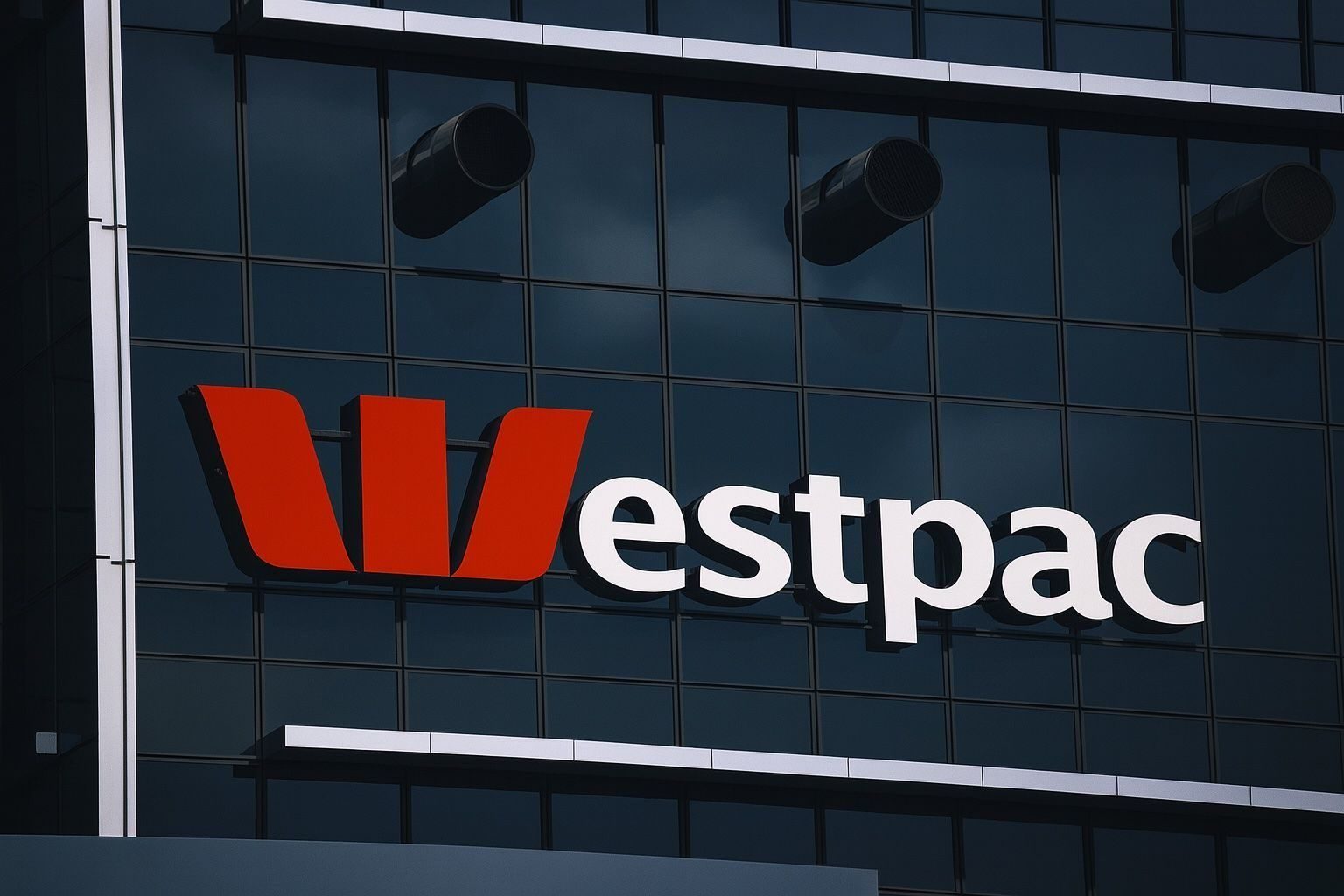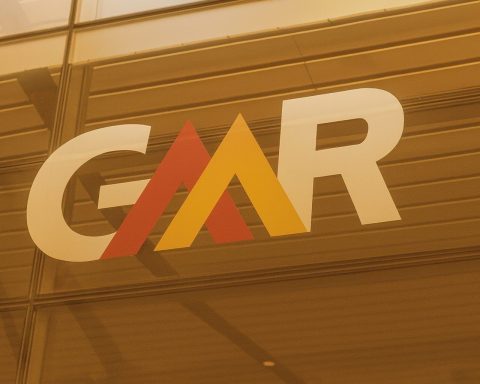When the Australian market opens on Monday, 24 November 2025, Westpac Banking Corporation (ASX:WBC) will be trading against a rich backdrop of fresh earnings, capital-management moves, regulatory wins and a shifting interest-rate outlook.
Below is a rundown of the key numbers, themes and risks investors may want to have in mind before the bell. All data is current as at the close on Friday, 21 November 2025, unless stated otherwise.
1. Where the Westpac share price stands right now
- Last close: Westpac finished Friday, 21 November at A$37.13, down 1.64% for the day, on about 5.1 million shares traded. [1]
- Short‑term trend: The stock has slipped from around A$39–40 earlier in November, falling most days this past week. [2]
- 12‑month performance: Over the last year the shares are up roughly 10–15%, and MarketScreener shows a +14.9% year‑to‑date move as of 21 November. [3]
- 52‑week range: Roughly A$28.4 to A$41.0, based on stock price history data. [4]
- Valuation multiples: Recent statistics put Westpac on a trailing P/E around 18–19 times earnings and price‑to‑book near 1.7x. [5]
Taken together, Westpac is trading closer to the top of its 12‑month range, at a valuation that is not especially cheap compared with its own history, but roughly in line with many large banks.
2. FY25 result: modest profit dip, higher dividend
Westpac’s 2025 financial year (to 30 September 2025) results landed on 3 November and are still the main driver of the current narrative. [6]
Key highlights:
- Profit:
- Revenue and net interest margin (NIM):
- Costs:
- Operating expenses rose roughly 6–9%, depending on the measure, largely due to technology spend (the “Unite” transformation program), higher staff costs and restructuring charges. [11]
- Credit quality:
- Bad debts remain low. Reuters notes a reduction in overdue loans and only modest signs of stress, despite sustained pressure on mortgage borrowers. [12]
From a market perspective, the result beat analyst expectations modestly, which helped spark a share price rally immediately after the announcement earlier in November. [13]
3. Dividend, yield and payout: still a core part of the story
Dividends remain central to many investors’ interest in Westpac.
- FY25 dividends:
- Total ordinary dividend: 153 cents per share, up from 151 cps in FY24.
- Final dividend: 77 cps, fully franked, payable on 19 December 2025 (ex‑dividend date was 6 November, record date 7 November). [14]
- Payout ratio:
- Westpac’s FY25 payout ratio is about 75–76% of net profit, at the upper end of its target range of 65–75%. [15]
- Dividend yield at current prices:
- Based on data from various sources, the effective yield sits roughly between 4% and 4.5%, depending on whether you use trailing 12‑month dividends or the FY25 payout and the A$37.13 share price. [16]
- Investors also receive full franking credits, which can significantly boost after‑tax income for eligible Australian shareholders. [17]
Dividend‑focused investors going into Monday’s session will be weighing that 4‑ish percent cash yield (plus franking) against the risks of margin pressure, rising costs and the broader economic cycle.
4. Capital strength, APRA relief and the extended share buyback
Strong capital ratios
Westpac’s balance sheet remains solid:
- The bank reported a Common Equity Tier 1 (CET1) capital ratio around the mid‑12% range as at 30 September 2025, comfortably above its new target of >11.25%. [18]
- The Australian Prudential Regulation Authority (APRA) recently removed a remaining A$500 million “capital overlay” that had been imposed in 2019 after risk‑management concerns. This boosts CET1 by about 17 basis points, freeing up risk‑weighted assets of about A$6.25 billion and underlining regulatory confidence in Westpac’s risk systems. [19]
On‑market buyback extended to late 2026
Capital strength is also being returned to shareholders via buybacks:
- Westpac has been running an on‑market buyback totalling around A$3.5 billion, with roughly 70%+ of that completed by mid‑2025.
- In November 2025, the bank extended the buyback program by a full year to 10 November 2026, after repurchasing about A$2.48 billion in shares to date.
A larger buyback reduces shares on issue and can support earnings per share and the share price over time, but it also raises questions about how much “spare” capital is left if economic conditions deteriorate.
5. Big strategic moves: RAMS sale, tech overhaul and job cuts
RAMS mortgage portfolio sale
Westpac is reshaping its lending book:
- On 3 November 2025, Westpac agreed to sell its A$21.4 billion RAMS mortgage portfolio to a consortium including Pepper Money, KKR and PIMCO, at a slight premium to gross loans. [20]
- Even with the premium, Westpac expects to book a loss once transaction costs and adjustments are included. [21]
This sale continues Westpac’s multi‑year exit from non‑core businesses and is aimed at simplifying the balance sheet and sharpening focus on core Westpac‑branded mortgages and business banking.
UNITE technology program and cost‑out drive
Westpac is deep into “Unite”, a large‑scale technology and operations simplification project:
- Unite aims to collapse multiple legacy mortgage systems onto a single core platform, with total tech spend projected to be roughly A$2 billion per year between FY25 and FY28, and A$850–900 million of Unite‑related costs flagged for FY26 alone. [22]
- Management is targeting around A$750 million in annual cost savings by 2030, but benefits are not expected to be fully visible until after 2028. [23]
- The cost‑to‑income ratio currently sits above 50% (about 53.1% according to recent reporting), worse than CBA’s, underlining how much work remains. [24]
As part of its cost‑reduction push, Westpac is also:
- Cutting around 1,500 roles (about 5% of its workforce), while investing more in frontline staff and digital channels. [25]
- Recording a A$273 million restructuring charge in the second half of FY25 under the “Fit for Growth”program. [26]
For Monday’s open, investors may continue to wrestle with the trade‑off: near‑term cost and execution risk versus potential long‑term efficiency gains.
6. Macro backdrop: RBA pause, housing heat and consumer signals
Westpac is highly sensitive to the Australian economy, interest rates and the housing market.
RBA on hold at 3.60%
- On 4 November 2025, the Reserve Bank of Australia (RBA) left the cash rate unchanged at 3.60%, where it has been since August, following three cuts earlier in the year.
- A surprise uptick in inflation has the RBA warning that price pressures, especially from housing and rents, could stay elevated into 2026.
Westpac’s own economists now expect:
- No further rate moves until at least mid‑2026, followed by 25‑basis‑point cuts in May and August 2026, assuming inflation behaves.
Lower rates generally support loan growth but can squeeze margins if deposit pricing remains competitive. Monday’s trade may reflect ongoing recalibration of expectations around that path.
Housing and first‑home buyers
Westpac remains heavily exposed to Australian housing:
- The bank’s housing loan book grew about 5% in FY25 to roughly A$497 billion, but it is growing more slowly than some peers. [27]
- A government expansion of the First Home Buyers Guarantee has driven a 150% jump in Westpac’s first‑home‑buyer loan applications in October versus a year earlier, indicating robust demand at the entry level of the market. [28]
At the same time, Westpac and other banks are increasingly reliant on mortgage brokers:
- Broker‑originated loans at Westpac have risen from 52% in 2023 to about 67.5% in 2025, which helps volumes but can compress margins due to broker commissions. [29]
Consumer spending signals
Westpac’s own Card Tracker Index has softened in the last couple of weeks of data:
- The index slipped by about 2 points to 153.7 in late October/early November, still slightly above its 2025 average but showing some cooling in spending momentum.
For Westpac, that mix of high house prices, elevated but stabilising rates and cooling consumer spending makes credit quality and arrears trends especially important watch‑points going into 2026.
7. Analyst sentiment: consensus says “underperform”
Despite the solid balance sheet and firmer dividend, sell‑side sentiment on Westpac is cautious at current prices.
MarketScreener’s latest consensus shows: [30]
- Mean recommendation: UNDERPERFORM
- Number of analysts: 13
- Average 12‑month target price: A$33.86
- Current price vs target: About 8.8% above the average target at A$37.13
- Target range: A$30.50 (low) to A$40.00 (high)
Other data points:
- Morningstar recently raised its fair value estimate to about A$30.50, highlighting Westpac’s wide economic moat but also calling for more efficiency gains. [31]
- Several local research houses have published valuation pieces in late November pointing out that at around A$37, Westpac is trading above many discounted‑cash‑flow or dividend‑discount fair value estimates, though income‑focused investors may still find the yield and franking attractive. [32]
In other words, the risk–reward balance at current levels is contested: consensus does not see huge upside from here, but there is also no overwhelming call to sell, especially given the capital returns program.
8. Key things to watch at the open on 24 November 2025
Here are some of the main factors that could shape Westpac’s trading when the ASX opens on Monday:
- Follow‑through from global markets
Movements in U.S. and European bank stocks on Friday night (Australian time) often influence opening sentiment for the ASX financials, including Westpac. - Reaction to weekend valuation commentary
Several local outlets have published fresh views on how to value Westpac shares over the weekend. If investors lean towards the more cautious “fully‑valued” camp, there could be further downside pressure; if income and buyback arguments dominate, the stock could stabilise. [33] - Positioning after the buyback extension
The extension of the buyback to November 2026 gives Westpac a long runway to keep taking shares off the market. Monday’s order book will show whether traders see that as enough support at current levels. - Ongoing read‑through from RBA and macro data
The market is still digesting the RBA’s November hold and updated inflation forecasts. Any new local data releases this week—like Q3 national accounts—could shift expectations for banks’ earnings and capital needs. - Sector‑wide moves in Australian banks
Westpac rarely trades in isolation. If investors rotate into or out of the banking sector as a whole—perhaps on global risk sentiment or domestic economic headlines—WBC is likely to move with CBA, NAB and ANZ.
9. Main risks investors should keep in mind
Before Monday’s session, it’s also worth revisiting some of the key risks hanging over the Westpac investment case:
- Margin pressure: Continued competition in mortgages and deposits could keep net interest margins under pressure, especially if deposit costs don’t fall as fast as the cash rate in future. [34]
- Execution risk on transformation programs: The Unite project and Fit for Growth cost‑out initiative are complex, multi‑year efforts. Delays, cost overruns or operational mis‑steps could weigh on earnings and sentiment. [35]
- Economic slowdown and credit quality: A softer consumer, rising unemployment or a sharp housing correction could drive higher arrears and impairment charges, offsetting current benign credit trends.
- Regulatory and political risk: Although APRA’s removal of the capital overlay is positive, banks remain under close scrutiny on mortgage pricing, broker commissions, climate policies and customer remediation. [36]
10. Bottom line: how Westpac looks heading into 24 November
Going into Monday’s open, Westpac looks like:
- A profitable, well‑capitalised major bank with a strong CET1 buffer, APRA’s confidence, and a sizeable ongoing buyback. [37]
- Offering a mid‑single‑digit, fully franked dividend yield with a payout ratio at the high end of its target range. [38]
- Trading near the upper half of its 12‑month price range, on a P/E in the high teens, and at a premium to most published analyst fair‑value estimates and the average target price of about A$33.86. [39]
For investors watching the stock before the ASX opens on 24 November 2025, the big questions are whether:
- the buyback and dividend are enough to justify the current valuation, and
- the bank can deliver the promised cost savings and tech simplification without eroding margins or capital if the economy slows.
Important note:
This article is general information only and does not constitute financial product advice or a recommendation to buy, hold or sell Westpac shares. It doesn’t take into account your objectives, financial situation or needs. Consider speaking with a licensed financial adviser and reviewing Westpac’s official disclosures before making any investment decision.
References
1. markets.ft.markitdigital.com, 2. www.intelligentinvestor.com.au, 3. markets.ft.markitdigital.com, 4. stockinvest.us, 5. stockanalysis.com, 6. www.sharecafe.com.au, 7. www.westpac.com.au, 8. www.westpac.com.au, 9. www.westpac.com.au, 10. www.westpac.com.au, 11. www.westpac.com.au, 12. www.reuters.com, 13. www.morningstar.com, 14. www.westpac.com.au, 15. www.westpac.com.au, 16. www.westpac.com.au, 17. www.westpac.com.au, 18. www.westpac.com.au, 19. www.westpac.com.au, 20. www.investing.com, 21. www.reuters.com, 22. theaussiecorporate.com, 23. theaussiecorporate.com, 24. www.theaustralian.com.au, 25. www.news.com.au, 26. www.reuters.com, 27. www.reuters.com, 28. www.theguardian.com, 29. www.reuters.com, 30. www.marketscreener.com, 31. www.morningstar.com.au, 32. www.raskmedia.com.au, 33. www.raskmedia.com.au, 34. www.reuters.com, 35. theaussiecorporate.com, 36. www.theguardian.com, 37. www.westpac.com.au, 38. www.westpac.com.au, 39. www.marketscreener.com







